Many comparisons have been made, jokingly, in the past about what football club represents what army, for example, Man City may represent Rebel Penguin Federation. However, the similarities between football and armies go beyond these satirical comparisons.
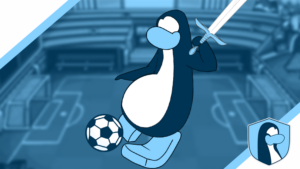
Designed by Scorp
Football is a game that was created long before the creation of Club Penguin armies. In its time it has gone through many different changes. The Football Association was created in 1863, this association organised football as we know it today. The oldest football club in the world is Sheffield FC. However, this has often been debated with many other teams claiming they were founded earlier than they originally thought. Claims about being the first of their kind aren’t limited to football clubs, either. The Army of Club Penguin‘s status as the first army has also been debated in the past, however, these claims were brushed aside.
Despite the claims, these two remain at the top of their respective organisation’s history. Football, as a game, was around long before any association was formed. However, the association brought laws and rules into place, much like Club Penguin Armies does for the army community today. It wasn’t long before mentions of cups/tournaments were heard and seen in the footballing world. From there friendly games even took place between countries.
The evolution of the game led to it becoming what we know today, with many changes happening along the way. From the creation of the international governing board to football leagues and much more, it became one of the most recognised sports in history.
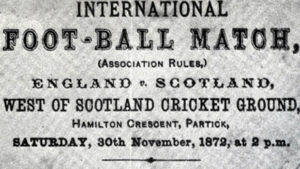
Similar to this, Club Penguin went from being a game that was primarily made for children to being a community split by organisations known as armies. The first army was created by Oagalthorp in 2006 (ACP), and it was organised using Miniclip forums. This would allow Oagal to communicate with members of Club Penguin and tell them where and when they’d meet up in-game. Oagalthorp’s creation led to many following in his footsteps after seeing his army/group in-game.
The ‘Color Wars‘ was one thing that influenced the creation of armies as penguins split up into their favourite colours and threw snowballs at the other teams. This was an influence before and after the creation of ACP. Even today, different colours can influence what army someone joins. For example, if your favourite colour is blue, you may join the Water Vikings or Help Force. Also, you may be less inclined to join a team wearing a completely different colour, like the Templars.
Much like armies, football teams are often depicted by which colour they wear. Some teams are often nicknamed by their colour too, e.g. “the blues”. This could describe many teams, however, in a match on the pitch, it is often abundantly clear who it describes. Alongside the colour of the teams’ shirts, they also have badges. While armies don’t have badges, they do have logos or pictures that represent the army. The picture may just be a penguin in uniform, however, it represents the army nonetheless.
Many of the readers will be thinking that this applies to other sports too and they’d be right to say that. However, football is often mentioned within the community and the fan base is arguably much larger than other sports. The Club Penguin community is also large, if you consider each and every person that’s been involved in it over time. Even today, the community is fairly active. A recent post stated that the entire community is more active than the Fortnite server which consists of over a million users.
This is not the reason that armies and football teams are being compared though. There are many more similarities to these two than people think.

Templars banner
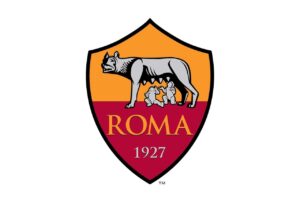
Roma club badge
One of the more recognisable similarities is that both have a “league table”. Even though armies have a Top Ten, it functions in a way which shows the best-performing army at the top. The Top Ten armies of the month and of the year continue this but they show the best-performing army over a longer period of time. Similar to this, football has a league table which can change during every single game. The way the league table functions has been a suggestion for armies to try in the past.
The Premier League (a top-tier English league) consists of 20 football clubs. They have the opportunity to gain points during each match they play. Three points are awarded if a team wins a game, one point for both sides if a draw happens and no points if a team loses. This means that, at any point in time, you could go up or down this table depending on how many points you have/gain and how many others have. Whilst the execution of the table is different than the Top Ten, it measures the best-performing team over a long period of time. This is something that even the Top Tens do with the Top Ten armies of the year.

The Premier League table in 2022/23
Every football match has referees who oversee the ongoings of the match. They determine whether or not a tackle is fair, if something is against the rules, if a ball goes out of play and much more. There are different layers of referees such as the head referee, assistant referees and even a fourth official. Bear in mind, for those who do watch football, this is without even talking about VAR which is a post in itself.
Army judges are similar because they oversee the ongoings of a battle and determine who wins or loses. They also decide if anything is against the rules, keeping each army in check. And also, like referees, there are many layers of judges. Currently, there are 3 sets of judges which consist of trainees, normal judges and head judges. Whilst head judges don’t get to dictate a verdict, if judging with other judges, they do hold influence over others and power outside of battles in terms of any decisions that need to be made.
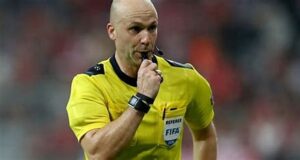
Another thing that both sides have in common in terms of referees and judges is that decisions get heavily criticised. The judges/referees are often targets of abuse from their respective fanbases. Even if they may not always get it right, sometimes people take things too far in both communities. This leads to unfortunate instances happening, e.g. a referee being attacked or judges being consistently harassed.
Unfortunately, toxicity is shared in both fanbases along with scandals. Whilst there are some things which shouldn’t be talked about, there have been many cases of footballers being arrested because of their actions. Even though this isn’t seen as much in armies, the community has seen a person’s actions deserve as much. Disregarding all of this, even outside of the extreme, “toxic” actions often take place. Whether it be verbal abuse, harassment or actual abuse, these things happen in both fanbases quite often.
It could be argued, however, that being in an army means that you should be immune to insults because armies should throw them out during battle. Yet, it’s not just in battle or on the pitch that it happens, it happens outside of the game. In football, most harassment and abuse can take place on Twitter. But, it also takes place after the match has taken place, inside and outside the stadiums. Sometimes it even happens in the streets or in bars.
A similar thing can be said with armies. For armies, we are limited to Discord so it becomes the equivalent of what Twitter is for footballers/fans. In many instances, past and present, it has been written on an army’s website as well. In a couple of cases, it has spread outside Discord/army websites, and onto other platforms or even real life, however, this is only a small minority of times.

100% a censored Club Penguin army post
Yet another similarity between armies and football is tournaments. Each of these two holds different tournaments for teams to participate in. In football, you have domestic cups like the FA Cup where only teams from the English football leagues are eligible to participate. There are European cups which see some of the best-performing teams from all over Europe participate. And, of course, there’s also the World Cup which sees countries from all over the world forming their best team to participate. There are many more cups and tournaments which are held all over the world which have different rules and different teams participating. However, these are just three of them.
To compare, armies have many cups and tournaments, some seasonal, some not. From Ausia Arena to Christmas Chaos, the year is filled with tournaments to keep armies occupied and competitive. However, when comparing the World Cup to armies, community events like the Color Wars could be considered as people from different armies joining together to compete wearing a specific colour. Whilst it is not the same as the World Cup, similarities can be drawn. Both can see rivals join each other to participate, and they can also see friends face each other in battle.
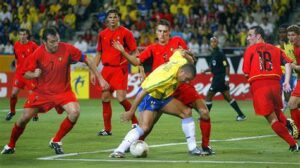
With that being said, the competitiveness of the two enables the fanbases to get involved, supporting their team. Enemies can easily become friends but friends can also become enemies. This doesn’t just apply to the World Cup either. In football, players can be seen going from one team to another as transfers are made. However, whilst there are no official member transfers between armies, members can also be seen moving from one army to another. On top of this, no-one in the community is paid to be a part of any army, unlike football. This means that armies are not paid for a troop moving to another army.
This isn’t where the similarities end, however. Every football team has a manager/head coach. The same applies to armies as they have leaders who oversee and lead the army. Moving down the ranks, clubs then have backroom staff and coaches which could be seen as the equivalent of staff/HCOM members. Then, of course, you have the players who represent the members of the army.
However, unlike football, the staff involved in armies participate in battles whereas backroom staff in football clubs don’t. An exception can be made if a player is also entrusted with a role in the club’s staff structure. But this isn’t regularly seen. Some eager football fans may be quick to realise that some of the staff structure has been left out. These include the founder, board of directors, president, vice president and more.

Even though a leader can easily be compared to a manager, they can also be compared to a president. Both leaders and presidents are figureheads and they are responsible for the administration of their respective club/army. This means that they’re responsible for the daily ongoings of their organisation, including management of the ranks. They are also responsible for creating and monitoring aims/goals for their organisation. This also includes their relationships with others outside their respective organisation.
The responsibilities of a president/leader can be different for each organisation as tasks can be delegated to a lower rank. The board of directors (which could be compared to godfathers) could also take ownership of some responsibilities. Going back down the list, a vice president could be compared to a leader-in-training and so on and so forth. However, these differ for each and every club/army.
Overall, football clubs and armies have a lot in common. But, these can be different for each club and each army. Some may have more similarities to some than they do to others. There are also a lot of differences which could be mentioned including a dissection of the aforementioned ranks. There are a lot more differences and similarities but it would take all day to explore them all. Whilst the post may seem, to some, to be clutching for straws at times, there is no doubt that each of these aspects are similar to armies.
It is for that reason that armies and football clubs are more similar than you think. But what do you think about all of this? Do you think that there are a lot more similarities than differences? Or perhaps there are a lot more differences than similarities? Let us know your thoughts!